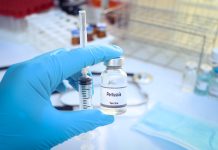Roxane Feller, AnimalhealthEurope Secretary-General, tells us all about the new EU rules on veterinary medicines to support more responsible use of antibiotics
Widely promoted by the European Commission as a key tool to address the challenge of antimicrobial resistance (AMR), the new EU rules on veterinary medicines taking effect in January 2022 set out a number of limitations and restrictions regarding the use of antibiotics in animal health care.
This was one of the intended objectives alongside reducing administrative burden; stimulating innovation; improving the functioning of the single market, and improving the availability of veterinary medicines. These objectives had the collective goal of encouraging the development of suitable medicines for all animal species and making a wider range of medicines available across all EU countries.
Streamlining to improve availability and coverage
Changes to support innovation and increase the availability of animal health care options include the streamlining of a number of important processes to reduce the administrative burden for veterinary medicines manufacturers. The foremost of these changes is the removal of the 5-year licence renewal system, supported by modifications in the pharmacovigilance system for reporting adverse side effects of medicine use. The new rules put an end to the current periodic safety update reports which medicines licence holders had to submit on a scheduled basis even when there was nothing to report.
Now, side effects will be signalled only when they occur, using a signal-management system, and they will be centrally stored in the EU Pharmacovigilance Database which will also contain the relevant information on the pharmacovigilance contact persons and licence holders. This is directly linked with the EU Product Database where companies report annual product sales and will be accessible by the wider public for full transparency on the safety management of products.
Increasing the availability of medicines and facilitating the single market is also spurred on by changes to authorisation procedures. The EU centralised procedure which offers a pan-EU authorisation to market a product is now open to all types of products, not just those classed as novel products, as was the case previously. All submissions for marketing authorisation will also be done electronically via a central E-submissions platform to help streamline the process.
Delivering on addressing AMR
Aside from supporting innovation and improving availability, the new rules bring an enhanced capacity to address antibiotic resistance. And the European Commission has lauded them as being the facilitator to help farmers deliver on aspirational targets proposed in the EU Farm to Fork strategy to reduce use and sales of antimicrobials by 50% by 2030.
A number of changes are coming into play as regards antibiotic use in the new rules, with a key piece on the establishment of a list of antibiotics reserved for human health to be elaborated on the basis of scientific advice from the European Medicines Agency. Member states are also granted the power to further prohibit the use of certain antibiotics in animals, but measures must be proportionate and justified, and the Commission must be informed when such measures are taken. It is important for animal welfare that vets retain the right to treat specific diseases in animals with the appropriate antibiotic as and when necessary.
As is the case today, all antibiotics for animals remain prescription-only throughout the EU. The new rules are more explicit however on prescriptions for preventive use of antibiotics. Antibiotics cannot be used to prevent illness (prophylaxis), except for an individual animal or a restricted number of animals, in case the risk of infection is very high and the consequences are likely to be severe. And antibiotics can only be used for group treatment (metaphylaxis) when the risk of spread of an infection or infectious disease already present in the group of animals is high and where no other appropriate alternatives are available.
Prescriptions for antibiotics to be used for metaphylaxis must be limited in time only to cover the period of the risk of infection and limited to small groups of animals, only after a diagnosis of the infectious disease by the vet. Prescriptions for antibiotics must also contain any warnings necessary to ensure responsible use of antimicrobials and are only valid for 5 days after issue.
As is also currently the case, the routine use of antibiotics to compensate for poor farm hygiene, inadequate husbandry, care or management, is not allowed. The ban on using antibiotics for growth promotion purposes or increased yield, in place since 2006, is also upheld. An additional point in the new rules states that these restrictions on antibiotic use and the prohibition to use treatments classed as important for human health will also apply to producers in third countries who export animals or animal-source food products into the EU.
It will certainly be interesting to see how these rules come into play in 2022 and beyond, and how they may impact animal health on a global scale!











